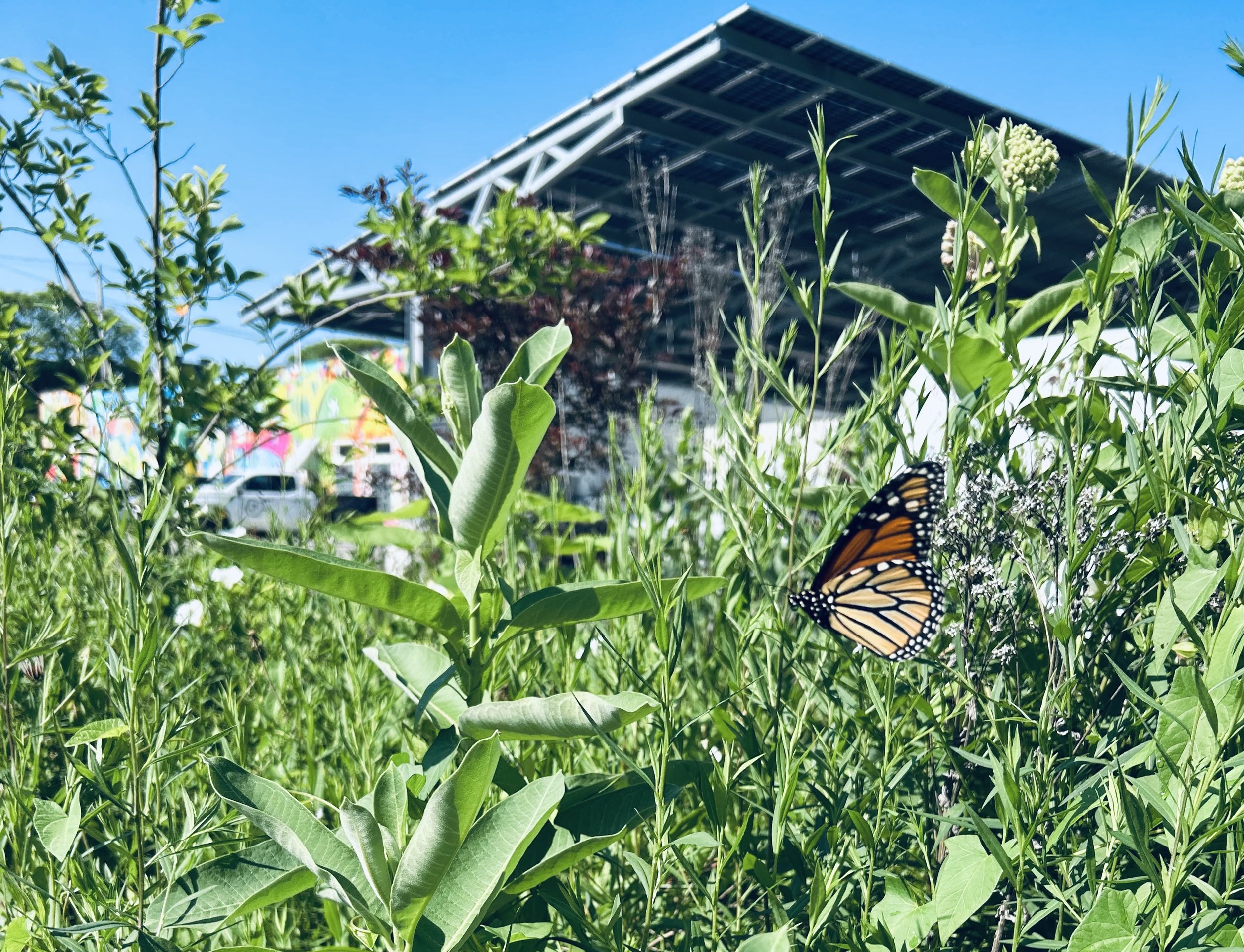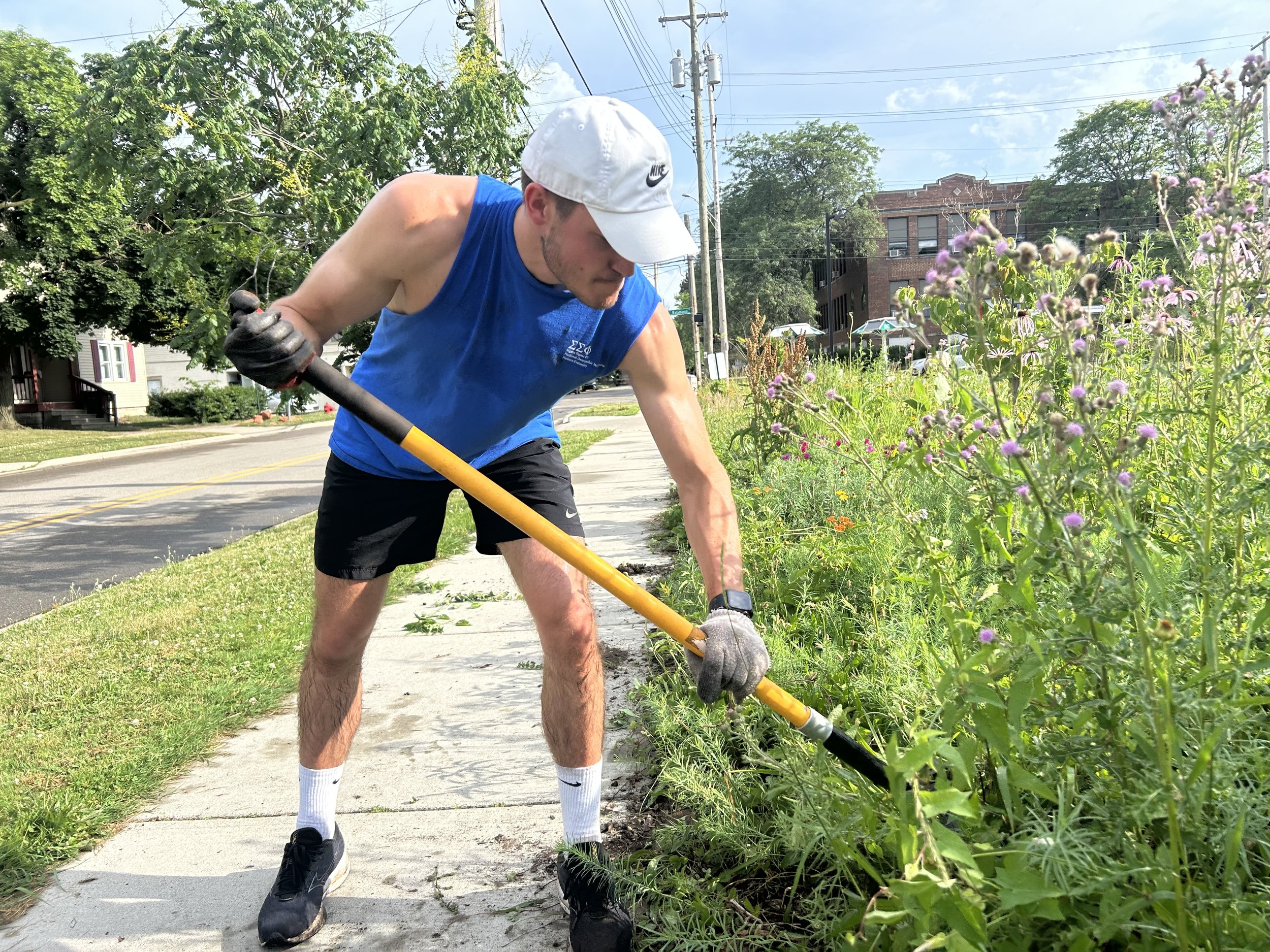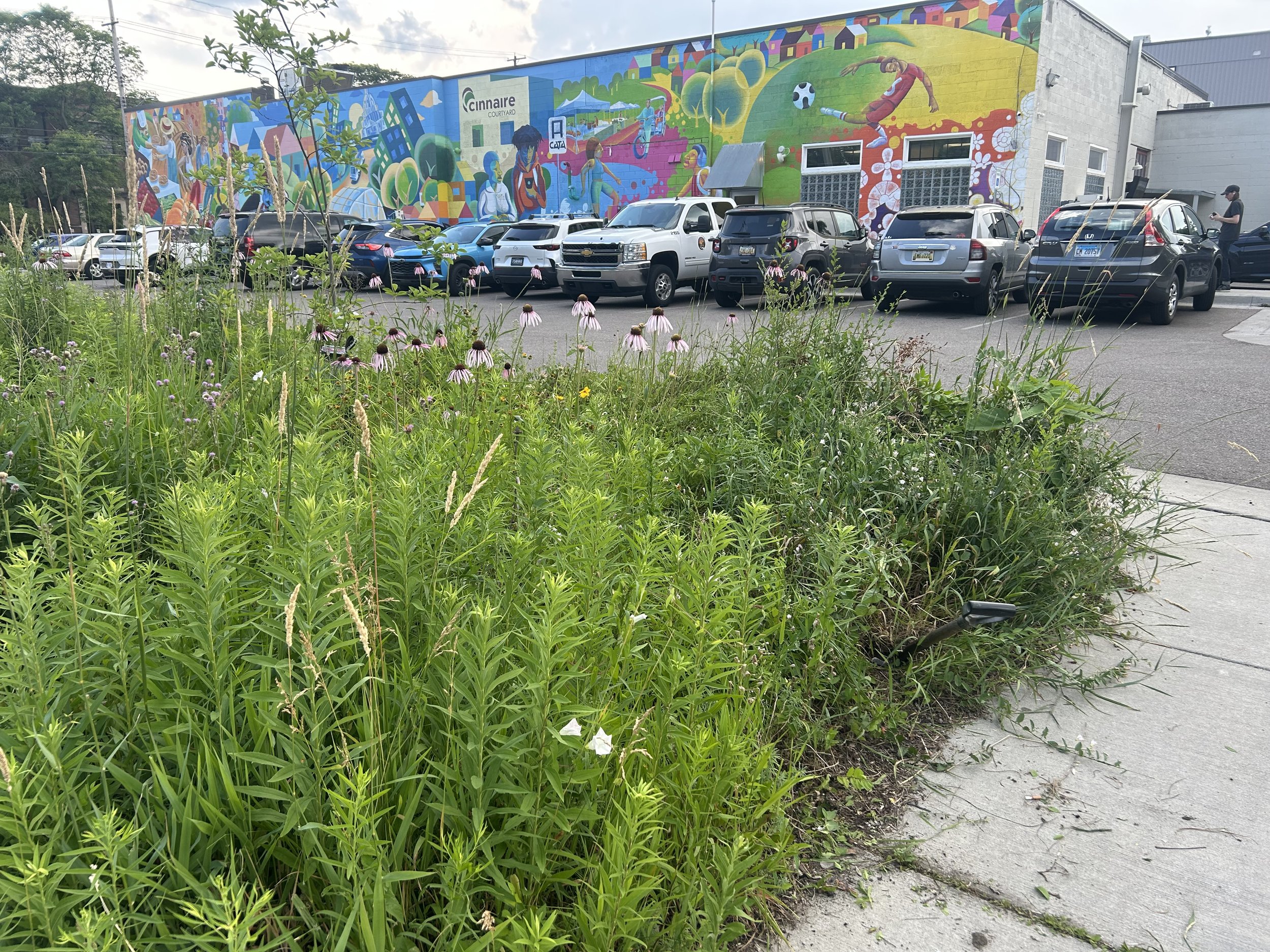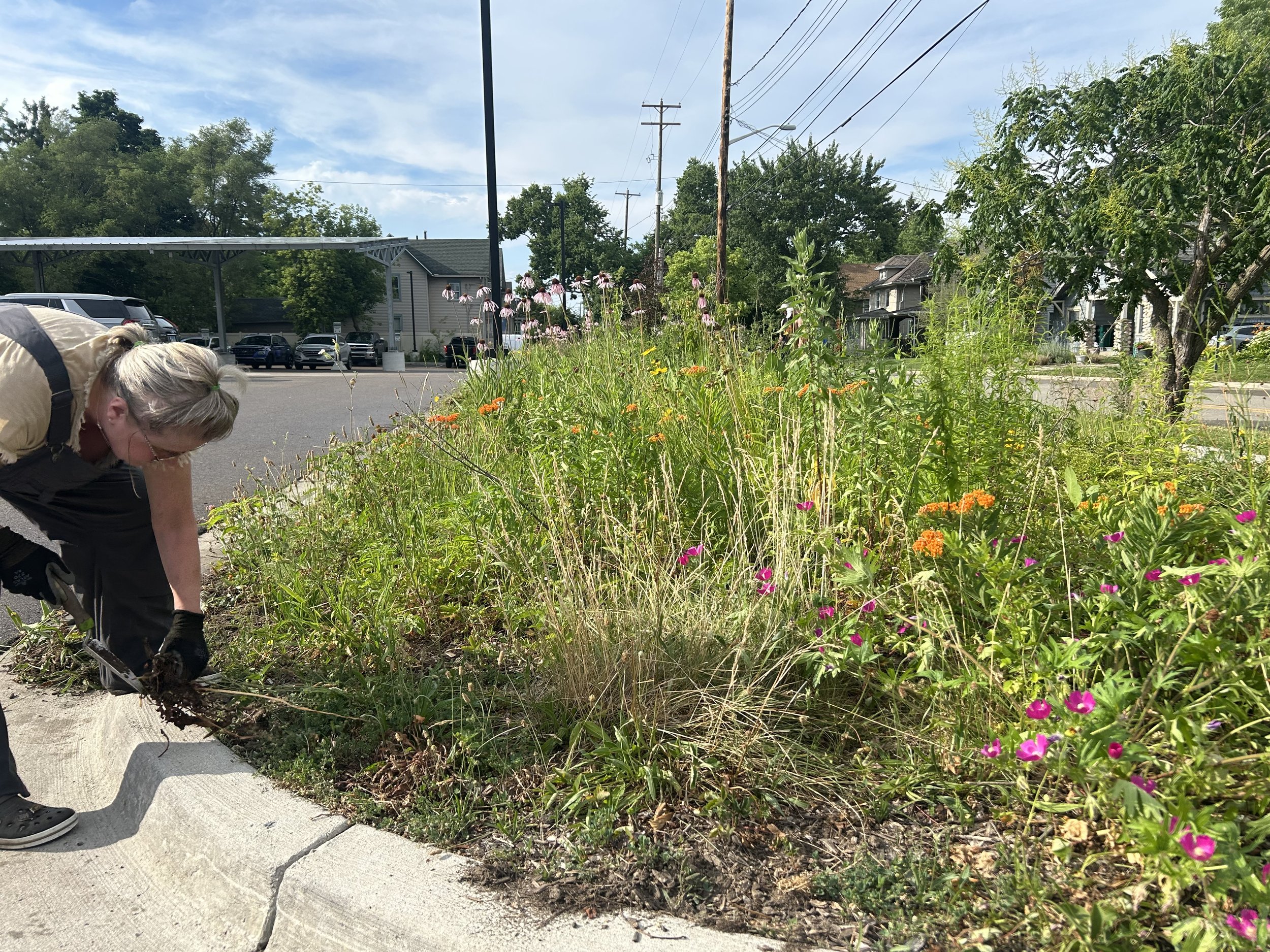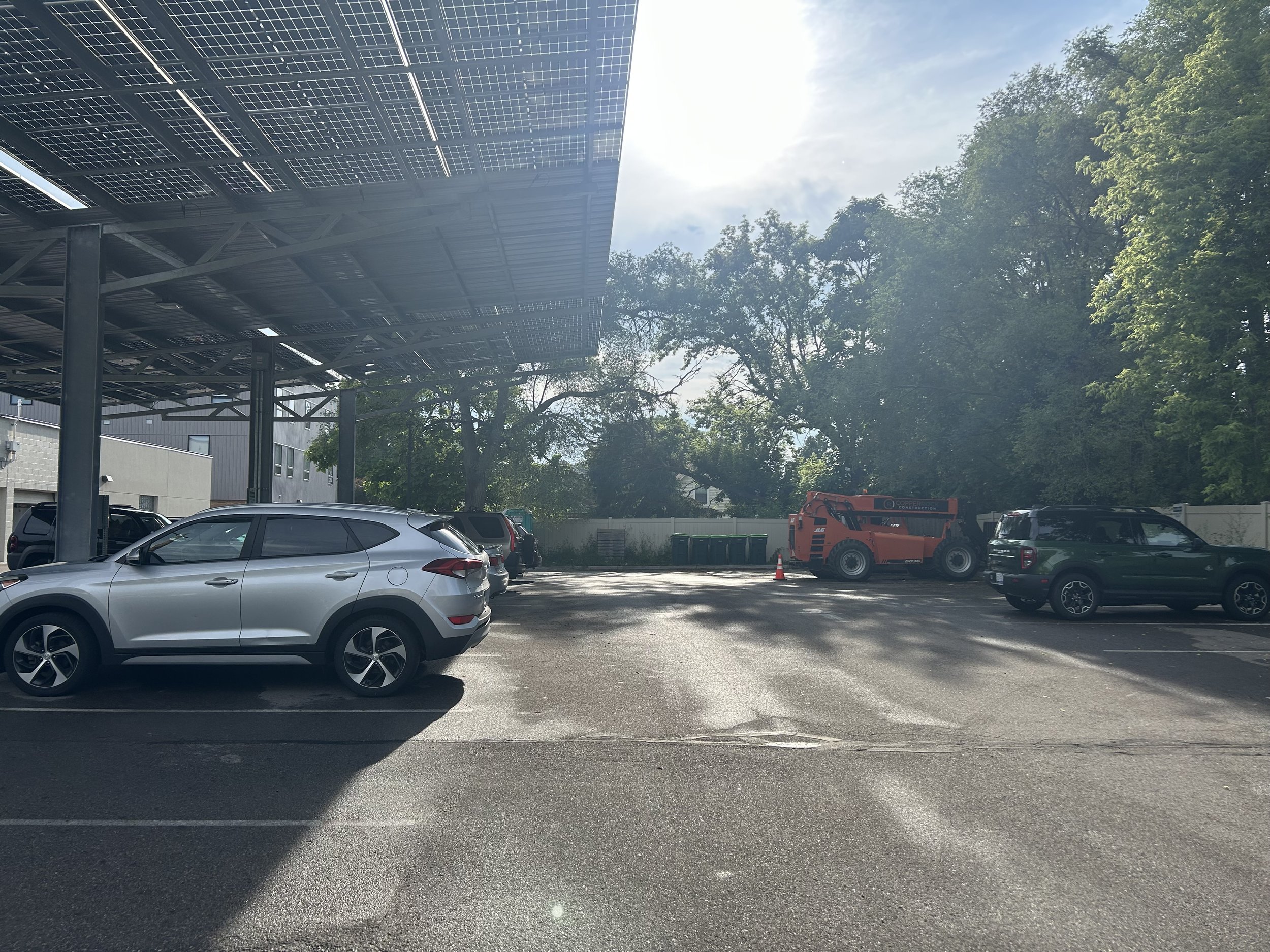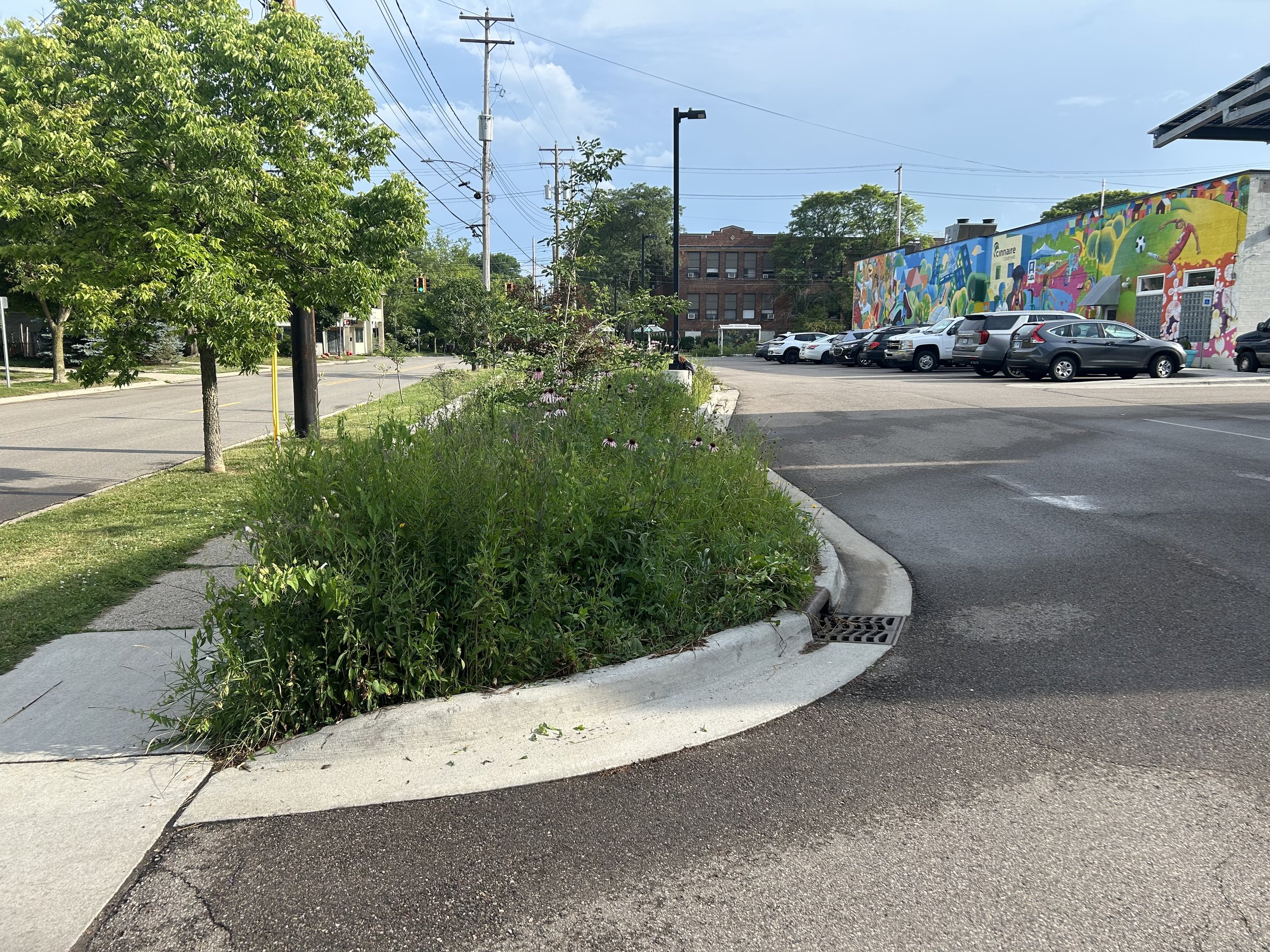Allen Neighborhood Center Garden Strategy
Helping to preserve and extend the educational value of a native plant garden.
2025: Laying the Foundation
1) Establish a Predictable Volunteer Schedule
Set regular work days—e.g., the 1st and 2nd Thursday of each month in the summer.
For spring, schedule every Thursday in April and May for a big seasonal push.
Plan fall clean-up for every Thursday in November.
If volunteer turnout is low, add incentives (food, recognition, or a fun activity).
Consider a simple volunteer sign-up tool (like SignUpGenius or Google Forms) to reduce coordination hassle and boost engagement.
2) Prevent Weedy Invasions
Prioritize known “hotspots,” especially where invasive Eurasian plants encroach from turf areas.
Weed these zones first and create physical barriers (e.g., deep edging, mulch buffer) to prevent re-invasion.
Consider periodic “Weed Warrior” events with local youth groups or scout troops to maintain momentum and community buy-in.
3) Maintain and Celebrate Garden Successes
Host brief, end-of-season “Garden Walks” or open houses to share progress and celebrate with neighbors and partners.
Create a “before and after” photo journal to visually document progress for grants, PR, and volunteer motivation.
2026: Growing the Impact
A) Enhance Lawn and Garden Interface
Make the surrounding lawn looks tidy—signals care, even if the native garden is wild by design.
Use broadleaf herbicide as needed to limit turf-to-garden weed migration (be mindful of ecological impact). May need to consult or hire lawn care experts.
Edge garden borders with natural stone or logs for definition and as a subtle footpath.
B) Integrate Rainwater Management
Drill holes in concrete curb to divert rain water create shallow rain gardens to capture and filter runoff.
Decide where “dry” and “wet” native zones will be, and design transitions for a cohesive look.
Install simple educational signs explaining how rain gardens work and their environmental benefits.
C) Increase Access and Interaction
Add gravel or stone pathways to make the inner garden accessible and inviting.
Install a “discovery trail” with QR codes linking to plant facts, photos, and stewardship tips.
D) Diversify Groundcover and Foraging
Add low-growing native groundcovers, plus edible plants for community foraging (e.g., wild strawberries, ramps).
Host a “taste of the garden” day highlighting edible natives and recipes.
E) Partner for Innovation
Invite MSU landscape architecture students for design input, volunteer hours, and research projects.
Form a “Garden Ambassadors” team to help lead tours and recruit new helpers.
2027: Extending and Enriching
Continually refine plant selection for year-round beauty, resilience, and ecological value.
Expand educational materials: updated plant guides, kids’ scavenger hunts, and interactive displays.
Add new “satellite” native gardens at sites like Frandor and Red Cedar, integrating them into the volunteer network.
Extend rain garden projects where feasible, connecting with broader watershed efforts.
Pursue grant funding or “adopt-a-garden” partnerships with local businesses or service groups for long-term sustainability.
Summary of long term strategy:
Build up resiliance so that gardens can thrive even if untended for periods of time: Build barriers to prevent spread of Euroasian invasives. Lawn Care to minimize invasive plants in the lawn.
Integrate rainwater collection.
Enhance the garden, considering its beauty and diversity. Balance orderly design and utility, while the garden evolves as an ecosystem.
Encourage interaction with the garden; adding small stepping stone pathways, a few edible plants.
Increase the educational value; this will also help preserve the longterm vision.
